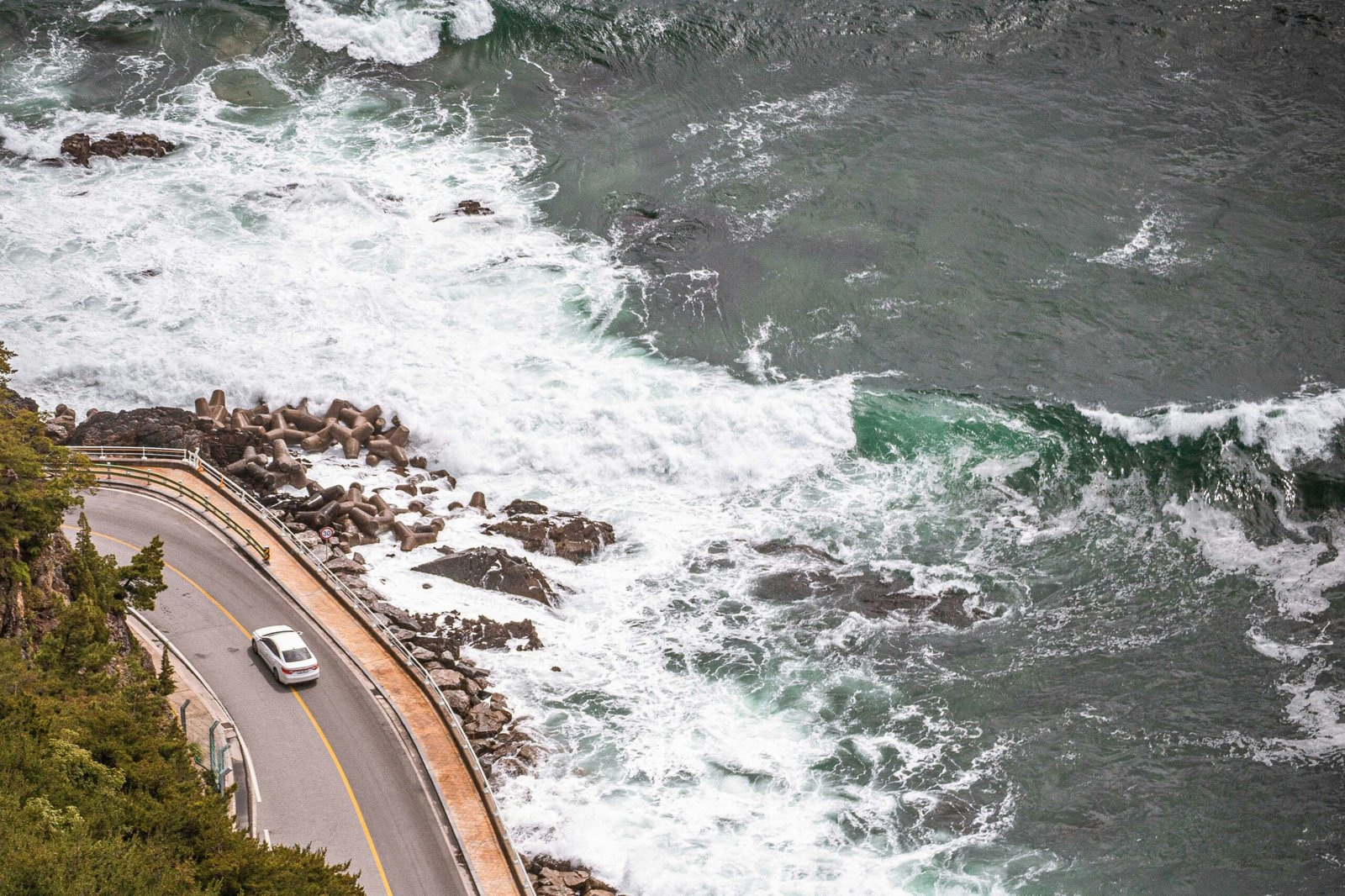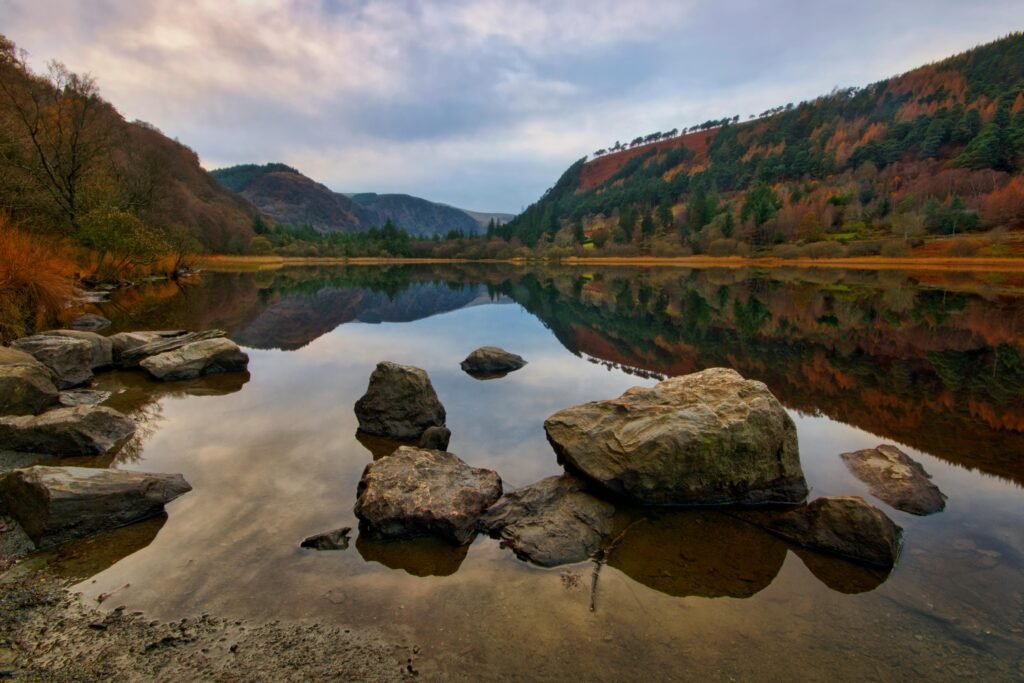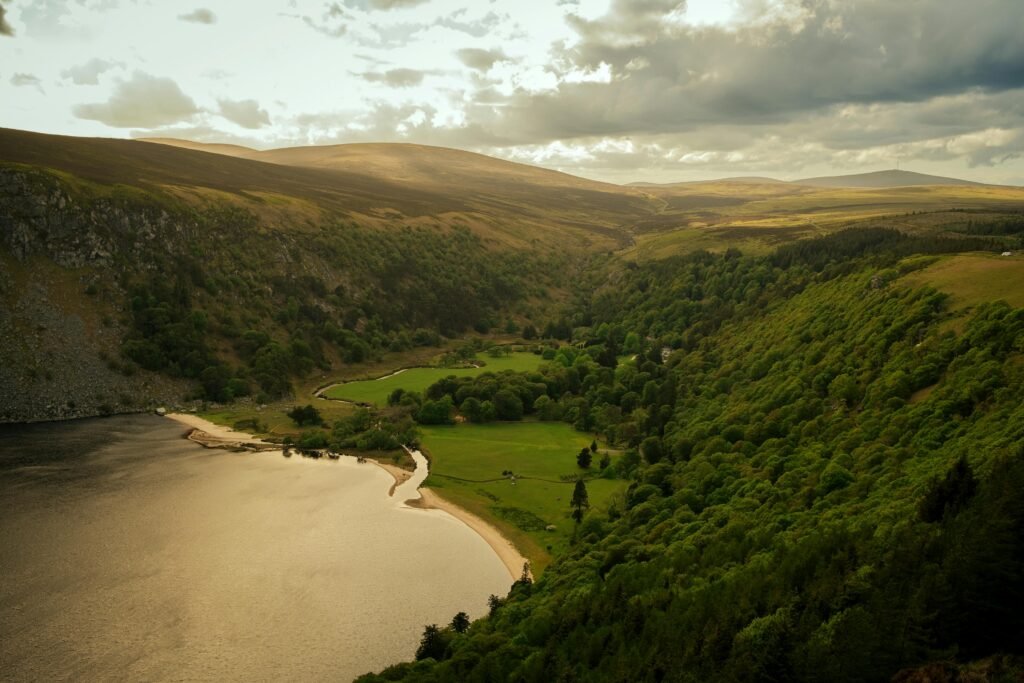Introduction to the Wild Atlantic Way
The Wild Atlantic Way stands as a testament to the raw and unspoiled beauty of Ireland’s western coastline. Spanning approximately 2,500 kilometers, it encompasses the rugged cliffs, sweeping beaches, and charming villages that characterise the coastal regions of counties such as Donegal, Galway, and Kerry. This remarkable route is recognized as one of the longest defined coastal routes in the world, offering visitors a unique opportunity to immerse themselves in the diverse landscapes and vibrant culture that define this part of Ireland.

The geographical features along the Wild Atlantic Way range from dramatic cliffs that rise sharply from the Atlantic Ocean to picturesque coves and expansive coastal plains. The route includes notable landmarks such as the Cliffs of Moher, the Slieve League Cliffs, and the tranquil waters of places like the Connemara National Park. These natural wonders not only enhance the route’s visual appeal but also contribute significantly to the biodiversity and ecosystems found in these areas.
Culturally, the Wild Atlantic Way holds a deep significance. It is a pathway through Ireland’s rich history, dotted with ancient ruins, historic castles, and traditional music venues. Communities along the route take great pride in their heritage, with many towns and villages celebrating their unique customs and stories through festivals and events throughout the year. This connection to culture amplifies the allure of the region, attracting tourists seeking not only stunning views but also meaningful interactions and experiences.
For anyone considering a journey along this enchanting coastal road, the Wild Atlantic Way promises not only breathtaking landscapes but also a profound connection to the heart of Ireland’s natural and cultural essence. Unraveling the secrets of this route is an adventure that beckons to be explored.
Planning Your Trip: Best Times to Visit
When embarking on a road trip along the breathtaking Wild Atlantic Way, careful planning can significantly enhance the experience. Typically, the best time to visit this stunning coastal route is during the late spring through early autumn months, specifically from May to September. This period offers the most favorable weather conditions, with milder temperatures and less rainfall, allowing travelers to fully immerse themselves in the scenic beauty of the rugged coastline, charming towns, and historical landmarks.
The peak tourist season runs from June to August, attracting many visitors eager to explore the area’s natural wonders and partake in local festivals. While this may be an excellent time for social events and bustling atmosphere, it is advisable to book accommodations and popular attractions well in advance to avoid disappointment. Additionally, road conditions during the peak season are often optimal, allowing for a smoother travel experience.

Conversely, visiting the Wild Atlantic Way during the shoulder seasons of spring (March to May) or autumn (September to October) presents travelers with unique advantages. This time frame often boasts fewer crowds and offers a chance to enjoy quieter attractions, providing an opportunity for a more intimate encounter with the landscapes. Furthermore, early spring showcases blooming flowers and revitalized scenery, while autumn accentuates the area with vibrant foliage and spectacular sunsets.
For those considering a more adventurous experience, the off-season during winter (November to February) provides a different, albeit less comfortable, perspective of the Wild Atlantic Way. While the weather can be unpredictable and harsh, intrepid travelers may be rewarded with crisp, unspoiled landscapes and dramatic waves. However, planning is crucial, as many local businesses may operate on limited schedules during these months. To make the most of your journey, allocate sufficient time to appreciate each stop, ideally extending your trip to at least a week to discover the wonders of this captivating coastline.
Must-See Attractions along the Route
The Wild Atlantic Way offers an array of must-see attractions that capture the essence of Ireland’s stunning coastline. From towering cliffs to quaint towns, this scenic drive is rich in natural beauty and historical significance. One of the most iconic stops along the route is the Cliffs of Moher. Rising over 700 feet above the Atlantic Ocean, these majestic cliffs provide breathtaking views and are a designated UNESCO Global Geopark. The visitor center offers educational exhibits, making it a perfect spot for both nature lovers and families alike.
Another notable attraction is the Dingle Peninsula, renowned for its rugged landscapes and charming communities. The town of Dingle boasts colorful buildings and vibrant local culture, as well as opportunities for water sports and delectable seafood. The scenic Slea Head Drive nearby circles around the peninsula, offering panoramic views of the Blasket Islands and dramatic coastal features that exemplify Ireland’s natural allure.
For history enthusiasts, the ancient stone forts of the Aran Islands present a unique glimpse into Ireland’s past. Inis Meain, the least developed of the three islands, features stunning landscapes, historic sites, and distinctive Gaelic culture. Visitors can explore the well-preserved ruins of stone forts and enjoy a peaceful atmosphere that transports them back in time.
Lastly, no journey along the Wild Atlantic Way would be complete without a visit to Kinsale. This picturesque town is famous for its cobbled streets, vibrant history, and culinary scene. As a historic port, Kinsale offers both aesthetics and a rich narrative of Irish heritage, featuring sights like the star-shaped Charles Fort. Every stop along this scenic road trip connects travelers with Ireland’s extraordinary landscape and cultural treasures, making each moment memorable.
Experiencing Ireland’s Stunning Landscapes
The Wild Atlantic Way offers an unparalleled opportunity to explore Ireland’s diverse and breathtaking landscapes. As travelers journey along this scenic route, they encounter dramatic cliffs that rise majestically from the Atlantic Ocean, inviting visitors to pause and reflect. The Cliffs of Moher, standing at over 700 feet, are among the most famous cliffs, providing stunning vistas that capture the essence of Ireland’s natural beauty. From designated viewpoints, such as O’Brien’s Tower, photographers can capture the interplay of light and sea, a spectacle that changes with the weather and time of day.
In addition to cliffs, the Wild Atlantic Way is dotted with sandy beaches that beckon to visitors for relaxation and exploration. Places like Lahinch Beach are perfect for family outings and water sports, while the quiet shores of Rossbeg offer a tranquil setting for those seeking solitude. The contrast between the rugged coastline and the soft sandy beaches creates a unique landscape that is emblematic of Ireland’s charm.
Travelers will also discover lush green hills that appear to blanket the countryside. These rolling hills are often framed by ancient stone walls, creating picturesque scenes that invite photography enthusiasts to capture the sweeping vistas. The Slieve League cliffs in County Donegal further illustrate this point, showcasing not only high cliffs but also green valleys, making it an ideal destination for both experienced hikers and casual walkers alike.
Serene bays, such as Ballintoy Harbour, reveal a different facet of Ireland’s coastal beauty. The turquoise waters and stark rock formations captivate those looking to experience the quieter side of the Wild Atlantic Way. Each turn along the route presents a new opportunity to embrace Ireland’s remarkable landscapes, enriching the traveler’s experience and offering endless photo opportunities. The Wild Atlantic Way is indeed a testament to the diverse natural beauty that defines Ireland and captivates all who visit.
Cultural and Historical Highlights
The Wild Atlantic Way is not only renowned for its breathtaking landscapes but also for its rich cultural heritage and historical significance. This coastal route offers travelers a diverse array of experiences, showcasing ancient ruins, distinctive local music, and the fascinating folklore that permeates the region. These elements are vital in enhancing the overall journey along Ireland’s scenic west coast.
As you traverse the Wild Atlantic Way, you will encounter a multitude of ancient ruins that speak to Ireland’s storied past. Sites such as the Stone Fort of Dún Aonghasa on Inis Meain and the imposing Dunluce Castle in County Antrim are just a few examples. These structures not only afford a glimpse into Ireland’s architectural heritage but also provide insights into the stories of the people who once inhabited these landscapes. The atmospheric ruins serve as perfect backdrops for contemplation and connect modern travelers with the ancient civilizations that once thrived here.
In addition to the historical sites, the local music scene along the Wild Atlantic Way plays a vital role in shaping the cultural landscape. Traditional Irish music sessions in local pubs allow visitors to immerse themselves in the heart of Irish culture. The haunting melodies of fiddles, the rhythmic beats of bodhráns, and the engaging vocals of local singers create an inviting atmosphere, fostering a deep appreciation for the region’s artistic expressions. Moreover, local festivals often celebrate these musical traditions, further enriching the experience.
Folklore is another integral aspect of the cultural tapestry found along the route. Local legends and stories are often shared in storytelling sessions, providing insight into the beliefs and traditions that have shaped communities over centuries. Engaging with these narratives lends a unique perspective to the natural beauty of the area, transforming a scenic drive into a meaningful exploration of Ireland’s heritage. Such interactions highlight the importance of cultural appreciation during one’s travels, making the Wild Atlantic Way an enriching experience for all who choose to explore it.
Outdoor Activities and Adventures
The Wild Atlantic Way is a remarkable destination for outdoor enthusiasts seeking a variety of activities amidst breathtaking coastal scenery. This iconic route winds its way along the rugged west coast of Ireland, offering opportunities for both adventure and relaxation. From hiking through stunning landscapes to surfing the roaring Atlantic waves, there is something to suit all skill levels.

One of the most popular activities along the Wild Atlantic Way is hiking. With trails ranging from gentle coastal walks to challenging mountain hikes, adventurers can explore the natural beauty of the Irish landscape. For those seeking a more strenuous trek, the Cliffs of Moher Coastal Walk offers panoramic views of the dramatic cliffs and the ocean beyond. Alternatively, the looped trails of Connemara National Park provide a range of options for varying abilities, allowing hikers to choose their own adventure while surrounded by breathtaking vistas.
For thrill-seekers, surfing in places like Lahinch or Bundoran is a must. These well-known surf spots cater to all levels, offering lessons for beginners and challenging waves for experienced surfers. Rental shops are readily available, providing access to surfboards and wetsuits without the need for extensive prior planning.
Kayaking also presents a fantastic way to experience the coastline up close. Tour operators such as Ireland Kayaking offer guided tours to stunning locations like the Skellig Islands or the tranquil waters of Kenmare Bay. These excursions allow paddlers to appreciate the unique wildlife and hidden caves while enjoying the serene beauty of the ocean.
Whether one prefers a leisurely hike, an exhilarating surf session, or a captivating kayak adventure, the Wild Atlantic Way is home to an impressive array of outdoor activities that promise excitement and discovery for every visitor.
Local Cuisine and Dining Options
The culinary landscape along Ireland’s Wild Atlantic Way offers an exquisite opportunity for visitors to indulge in traditional Irish cuisine and fresh seafood. This scenic route, stretching over 2,500 kilometers, not only showcases stunning landscapes but also boasts a vibrant food culture that reflects the rich heritage of the region. Travelers will find a variety of dining options ranging from charming pubs to elegant restaurants, each serving delectable dishes that pay homage to local ingredients.
Beginning in County Donegal, visitors should not miss out on sampling the famous Irish stew, a hearty combination of lamb and root vegetables. Sligo, renowned for its seafood, presents several dining establishments where visitors can savor dishes such as baked cod or grilled mackerel, often served with a side of crispy potatoes. To further immerse in local culture, dining at a traditional pub like the famous Hargadon Bros. in Sligo provides an authentic atmosphere, where meals are paired with live music and local craft beers.
Continuing along the route toward Galway, one can explore markets such as the Galway Market, which showcases an array of local produce, artisanal cheeses, and homemade consumables. This location offers the opportunity to taste fresh oysters, a specialty of the region, often enjoyed with a spritz of lemon and a glass of chilled white wine. Dublin also has diverse offerings, where restaurants like The Woollen Mills serve modern takes on classic dishes, emphasizing locally sourced ingredients.
In Cork, the English Market is a must-visit for food enthusiasts, presenting an array of stalls with local vendors selling everything from cured meats to baked treats. The combination of bustling markets and quaint restaurants along the Wild Atlantic Way presents an unparalleled culinary experience, enticing visitors to taste the flavors of Ireland while enjoying breathtaking coastal views. Each meal is an adventure that celebrates the culinary richness of this stunning region.
Travel Tips and Recommendations
Navigating the Wild Atlantic Way can be an exhilarating experience, but it’s essential to prepare adequately for the journey. The stretch of road showcases breathtaking landscapes, rocky coastlines, and charming villages, offering an abundance of exploration opportunities. To maximize your enjoyment, consider a few practical travel tips.
Begin by familiarizing yourself with the driving conditions. The roads along the Wild Atlantic Way can be narrow and winding, so it’s advisable to drive cautiously, particularly in rural areas. Awareness of potential weather changes is also crucial, as conditions can shift rapidly, affecting visibility and road conditions. Ensure your vehicle is well-maintained and equipped for any eventuality. Also, be mindful of local signage and speed limits as these can vary significantly from those in urban areas.
Parking can often be a concern in popular tourist spots, so plan ahead by researching available parking options at your destinations. Many towns along the route offer designated parking areas, which can help you avoid congestion and inconvenience. Additionally, some scenic spots have limited parking, so arriving early or considering alternative modes of transportation like bicycles may enrich your experience.
When packing for your trip along the Wild Atlantic Way, think about bringing appropriate attire for various weather conditions. Layers are essential, as temperatures can fluctuate dramatically throughout the day. Don’t forget essentials like a reusable water bottle, snacks, and a first aid kit for unforeseen circumstances. Technology can enhance your journey, so utilize GPS or map applications to navigate effectively. However, ensure that you have offline maps downloaded beforehand, as signal reception can be spotty in remote areas.
Lastly, while exploring the scenic landscapes, it’s vital to respect local communities and the environment. Stay on established paths to minimize your impact on natural habitats, and be considerate of residents’ privacy. Engaging with local culture and traditions can enrich your travel experience, highlighting the beauty of the Wild Atlantic Way while fostering positive interactions with the communities along the route.
Conclusion: Making the Most of Your Journey
Driving along the Wild Atlantic Way is not merely a road trip; it is an adventure filled with breathtaking views and rich cultural experiences. Each twist and turn of the coastal road unveils a new panorama, offering a unique glimpse into Ireland’s rugged beauty. From dramatic cliffs to secluded beaches, every stop along the way presents an opportunity for exploration and reflection. Embracing the spirit of adventure is essential to truly appreciate the stunning surroundings and vibrant communities that populate this remarkable route.
To maximize your journey, it is advisable to take your time and savor each moment. Plan your itinerary to include ample time at various locations, be it charming coastal towns, historic sites, or awe-inspiring natural wonders. Engaging with the locals can provide valuable insights into the rich culture and history that define the region. Whether you indulge in the delightful local cuisine or participate in traditional music sessions, these experiences will enrich your road trip and create lasting memories.
Moreover, the Wild Atlantic Way is not confined to major tourist hotspots; it is the hidden gems and lesser-known trails that often leave the most profound impressions. Taking the scenic route allows for spontaneous detours that can lead to unexpected discoveries. From quaint fishing villages to striking landscapes, these moments contribute to a holistic experience of Ireland’s coastal charm.
Ultimately, the journey along the Wild Atlantic Way is yours to shape. Plan thoughtfully yet remain open to altering your path as inspiration strikes. Each mile traveled offers a chance to create unforgettable memories, ensuring that your adventure along this spectacular coastal route stays with you long after the journey concludes.



